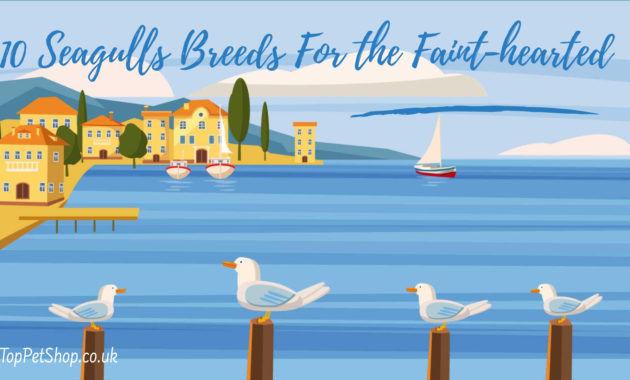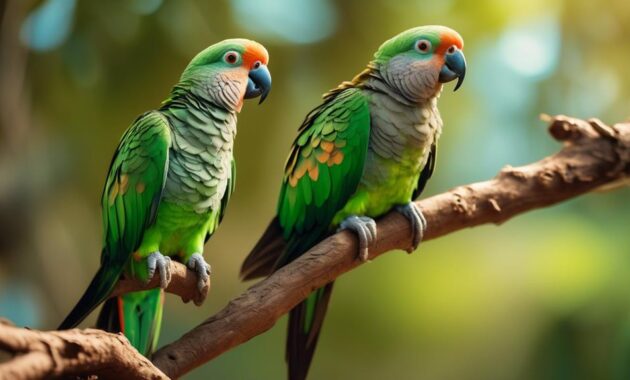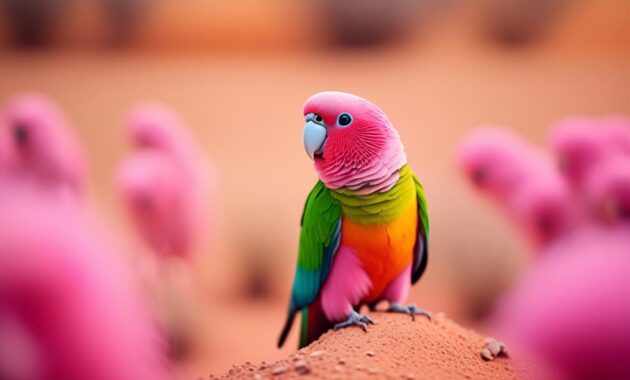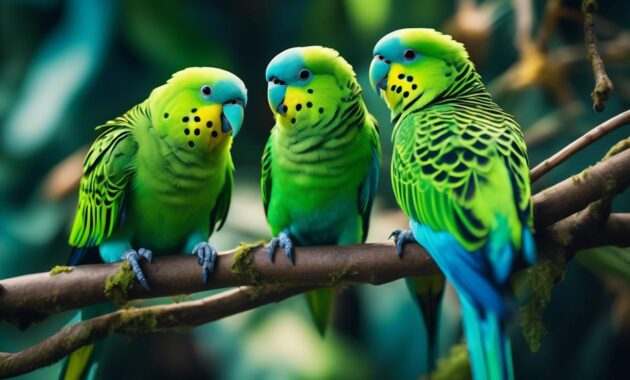
Step into the enchanting world of the Colorful Eclectus Parrots, the guardians of the rainforest. With their vibrant plumage and captivating personalities, these magnificent birds are a true delight to behold.
Standing at a modest 14 inches in length, the males boast a splendid combination of green, blue, and red feathers, while the females display a stunning blend of red and purple.
As you immerse yourself in their fascinating world, you will uncover a plethora of intriguing facts about their natural habitat, social behavior, and the challenges they face.
So, come along and discover the wonders of these charismatic creatures, whose presence in the rainforest is as precious as it is captivating.
Key Takeaways
- Eclectus Parrots are a species of parrot known for their vibrant and distinct colors, with males having bright green feathers with blue and red accents, and females having red and purple plumage.
- They are native to the Solomon Islands, New Guinea, and nearby islands, and can be found in rainforests, lowland forests, mangroves, and savannas.
- Eclectus Parrots are social and form strong pair bonds, often mating for life. They are known for their playful and curious nature, as well as their ability to talk and mimic sounds.
- The conservation status of the Eclectus Parrot is currently listed as a species of least concern, but their populations are declining in some areas due to habitat loss and the pet trade. Conservation efforts focus on protecting their natural habitats and maintaining healthy populations through breeding programs in captivity.
Size and Lifespan
Eclectus Parrots are medium-sized birds that measure approximately 14 inches in length and have a lifespan of around 30 years. These colorful birds are known for their striking appearance and long life expectancy. Males display bright green feathers with blue and red accents, while females have red and purple plumage. Both genders possess a unique beak shape that sets them apart from other parrot species.
Despite their medium size, Eclectus Parrots make a big impression with their stunning colors and elegant stature. With an average lifespan of 30 years, these birds have plenty of time to showcase their beauty and bring joy to their owners. Their vibrant plumage and distinctive beak shape are key features that make them visually appealing.
In addition to their aesthetic appeal, Eclectus Parrots are also valued for their long lifespan. Their 30-year average lifespan makes them wonderful companions and cherished members of the family. Owners can enjoy their presence and companionship for many years, creating lasting memories and bonds.
Distinctive Appearance

As you continue to explore the fascinating world of Eclectus Parrots, their distinctive appearance is sure to capture your attention. These colorful birds are known for their unique plumage, which differs between males and females. The males display a vibrant combination of bright green feathers with eye-catching blue and red accents, creating a stunning visual spectacle. On the other hand, the females boast a striking plumage of red and purple, adding to their allure. Both genders also possess a distinct beak shape, further enhancing their distinctive appearance. To fully appreciate the mesmerizing beauty of Eclectus Parrots, imagine the following table:
| Males | Females |
|---|---|
| Bright green | Red and purple |
| Blue and red accents | Unique beak shape |
With their vivid colors and unique features, Eclectus Parrots are truly a sight to behold in the rainforest.
Eclectus Parrot's Natural Habitat

Ever wondered where the Eclectus Parrot calls home in the wild? These colorful birds are native to the Solomon Islands, New Guinea, and nearby islands. They can be found in a variety of habitats, including rainforests, lowland forests, mangroves, and savannas.
Unlike migratory birds, Eclectus Parrots stay in their territories year-round. This allows them to establish strong pair bonds and mate for life.
Their natural habitat provides them with an abundance of fruits, seeds, nuts, and flowers, which make up the majority of their diet.
Conservation efforts are focused on protecting their habitats from destruction and preserving the biodiversity of these vital ecosystems. By safeguarding their natural homes, we ensure the continued presence of these charismatic guardians of the rainforest.
Colors of Eclectus Parrots

When exploring the vibrant world of Eclectus Parrots, one cannot help but be captivated by the stunning array of colors these magnificent birds possess. Males showcase a striking combination of bright green feathers with vibrant blue and red accents, creating a visually captivating display. On the other hand, females exhibit a majestic plumage in shades of red and purple, adding a touch of elegance to their appearance. Both genders possess a distinct beak shape that further enhances their unique beauty. To illustrate the mesmerizing colors of Eclectus Parrots, here is a table showcasing their remarkable plumage:
| Gender | Main Color | Accent Colors |
|---|---|---|
| Male | Green | Blue, Red |
| Female | Red, Purple | – |
These enchanting colors make Eclectus Parrots a true spectacle in the rainforest, showcasing the diversity and beauty of nature's creations.
Social Behavior and Communication

Eclectus Parrots are highly social creatures, known for their playful and affectionate nature. When it comes to social behavior and communication, these vibrant birds have some fascinating traits that set them apart. Here are three key aspects to consider:
- Strong Pair Bonds: Eclectus Parrots form strong pair bonds and often mate for life. They're known for their loyalty and commitment to their partners, which is a beautiful sight to witness.
- Vocalizations and Body Language: These parrots are vocal and expressive. They communicate through a variety of vocalizations, including squawks, chirps, and even the ability to mimic sounds. Additionally, they use body language, such as fluffing their feathers or raising their crest, to convey their emotions and intentions.
- Playful and Curious Nature: Eclectus Parrots are naturally curious and love to play. They enjoy interacting with toys, exploring their environment, and engaging in activities that provide mental stimulation. Their playful nature makes them delightful companions.
Understanding the social behavior and communication patterns of Eclectus Parrots allows us to appreciate their unique personalities and form deeper connections with these charismatic guardians of the rainforest.
Playful and Curious Nature

As we explore the playful and curious nature of Eclectus Parrots, we can appreciate their inquisitive personalities and their love for engaging in various activities. These vibrant birds are known for their exuberant behavior and their constant need for mental stimulation. They enjoy exploring their surroundings, investigating objects with their beaks, and playing with toys.
Eclectus Parrots are highly intelligent creatures that thrive on interaction and socialization. They aren't afraid to try new things and are always eager to learn. Whether it's solving puzzles, playing games, or simply interacting with their human companions, these parrots exhibit a playful and curious nature that brings joy to those who've the privilege of observing them.
Their lively antics and adventurous spirit make them captivating guardians of the rainforest.
Diet and Feeding Habits

To understand the dietary needs and feeding habits of Eclectus Parrots, let's delve into their preferences and nutritional requirements.
- Fruits, seeds, nuts, and flowers make up the main diet of Eclectus Parrots. Their specialized digestive system allows them to efficiently process their food.
- Eclectus Parrots have a preference for certain fruits, such as figs and papayas.
These vibrant birds also consume leaves and bark for additional nutrients. When it comes to feeding, they forage in small groups or pairs, requiring mental stimulation and social interaction to thrive.
Understanding their diet and feeding habits is crucial to ensuring the well-being of these charismatic guardians of the rainforest.
Foraging and Group Behavior

Foraging and group behavior are essential aspects of the Eclectus Parrots' daily lives in the rainforest. These colorful birds rely on their strong social bonds and cooperative foraging techniques to survive and thrive in their natural habitat.
Eclectus Parrots forage in small groups or pairs, often communicating through vocalizations and body language to coordinate their movements. By working together, they increase their chances of finding food and staying safe from predators.
These parrots have a varied diet consisting mainly of fruits, seeds, nuts, and flowers. They've a preference for certain fruits, such as figs and papayas, but also consume leaves and bark for additional nutrients.
Foraging in groups not only provides them with mental stimulation and social interaction but also allows them to explore their surroundings and contribute to the overall health of the rainforest ecosystem.
Conservation Status and Concerns

The conservation status and concerns surrounding Eclectus Parrots highlight the need for protective measures to safeguard their populations and habitats.
- Habitat Loss: The destruction of rainforests and deforestation pose a significant threat to the Eclectus Parrots' natural habitat. As their homes disappear, their populations decline.
- Pet Trade: The demand for these charismatic parrots in the pet trade has had a negative impact on wild populations. The capture and trade of these birds disrupt their natural populations and can lead to further decline.
- Conservation Efforts: Conservationists focus on preserving the Eclectus Parrots' natural habitats and raising awareness about their conservation status. Breeding programs in captivity aim to maintain healthy populations and reduce the need for wild-caught individuals.
It is crucial to take action now to protect these colorful guardians of the rainforest and ensure their survival for future generations.
Impact of Habitat Loss

As we explore the impact of habitat loss on Eclectus Parrots, it becomes evident that their natural habitats are shrinking at an alarming rate. Deforestation and human activities are causing significant damage to the rainforests and lowland forests where these parrots reside.
The destruction of their habitats poses a serious threat to the survival of the Eclectus Parrots. With fewer trees and less vegetation, these birds struggle to find food and suitable nesting sites. The loss of their natural habitat also exposes them to predators and other dangers.
Additionally, the fragmentation of their habitats disrupts their social structure and breeding patterns. It's crucial that urgent conservation efforts are put in place to protect and restore the habitats of these colorful and charismatic parrots.
Threats From the Pet Trade

The Eclectus Parrots face significant threats from the pet trade, endangering their populations and disrupting their natural habitats. These vibrant birds are highly sought after as pets due to their stunning colors and playful personalities. However, the pet trade poses serious risks to their survival.
Illegal capture and trade: Many Eclectus Parrots are illegally captured from the wild and sold as pets, leading to a decline in their numbers in their native habitats.
Habitat destruction: The demand for these parrots as pets drives the destruction of their natural habitats, such as rainforests and lowland forests, to make way for human settlements and agriculture.
Stress and health issues: The process of capturing, transporting, and keeping Eclectus Parrots as pets can cause immense stress, leading to health problems and decreased lifespan.
It is crucial to raise awareness about the negative impacts of the pet trade and promote responsible ownership to ensure the conservation of these charismatic guardians of the rainforest.
Conservation Efforts and Breeding Programs

To address the threats posed by the pet trade and ensure the survival of Eclectus Parrots, conservation efforts and breeding programs have been implemented. These initiatives aim to protect the natural habitats of these colorful birds and maintain healthy populations in captivity.
Conservation organizations work to preserve the rainforests, lowland forests, mangroves, and savannas that these parrots call home. By safeguarding their habitats, these efforts help to maintain the ecological balance and ensure the availability of food sources for the birds.
Additionally, breeding programs in captivity play a crucial role in preserving the genetic diversity of the species and providing a safe haven for injured or orphaned parrots.
Through these combined efforts, we can continue to admire and appreciate the beauty of the Eclectus Parrots for generations to come.
Frequently Asked Questions
How Do Eclectus Parrots Acquire Their Vibrant Colors?
Eclectus Parrots acquire their vibrant colors through natural pigmentation in their feathers. Males have bright green feathers with blue and red accents, while females have red and purple plumage.
Are Eclectus Parrots Found in Any Other Regions Besides the Solomon Islands, New Guinea, and Nearby Islands?
Yes, Eclectus Parrots are also found in regions besides the Solomon Islands, New Guinea, and nearby islands. They inhabit rainforests, lowland forests, mangroves, and savannas in various areas, making them adaptable and widespread.
How Do Eclectus Parrots Communicate Through Body Language?
Eclectus Parrots communicate through body language by using various gestures and postures. They may puff up their feathers to show excitement or aggression, lower their heads to indicate submission, or sway back and forth to display contentment.
What Are Some Specific Fruits That Eclectus Parrots Prefer in Their Diet?
Some specific fruits that Eclectus Parrots prefer in their diet include figs and papayas. These colorful parrots have a specialized digestive system that allows them to efficiently process their food.
How Do Conservation Breeding Programs for Eclectus Parrots Contribute to Maintaining Healthy Populations in Captivity?
Conservation breeding programs for Eclectus Parrots maintain healthy populations in captivity by breeding and ensuring genetic diversity. They educate the public, support research, and work towards reintroduction programs to conserve the species.
What Makes Eclectus Parrots Charismatic Guardians of the Rainforest?
The exotic parrot, known as the Eclectus parrot, is a charismatic guardian of the rainforest. With its vibrant plumage and captivating personality, this loyal companion stands out among the double yellow-headed Amazon and other parrot species. Its unique traits and important role in the rainforest ecosystem make it a truly remarkable bird.
Conclusion
So, as you wrap up your journey into the world of the Eclectus Parrot, you can't help but be amazed by their vibrant colors, captivating personalities, and remarkable abilities.
These charismatic guardians of the rainforest truly are a sight to behold. However, their existence is threatened by habitat loss and the pet trade.
It's crucial that we take action to protect and conserve these incredible creatures and their natural habitat, ensuring that future generations can continue to admire their beauty and enjoy their presence in the rainforest.




